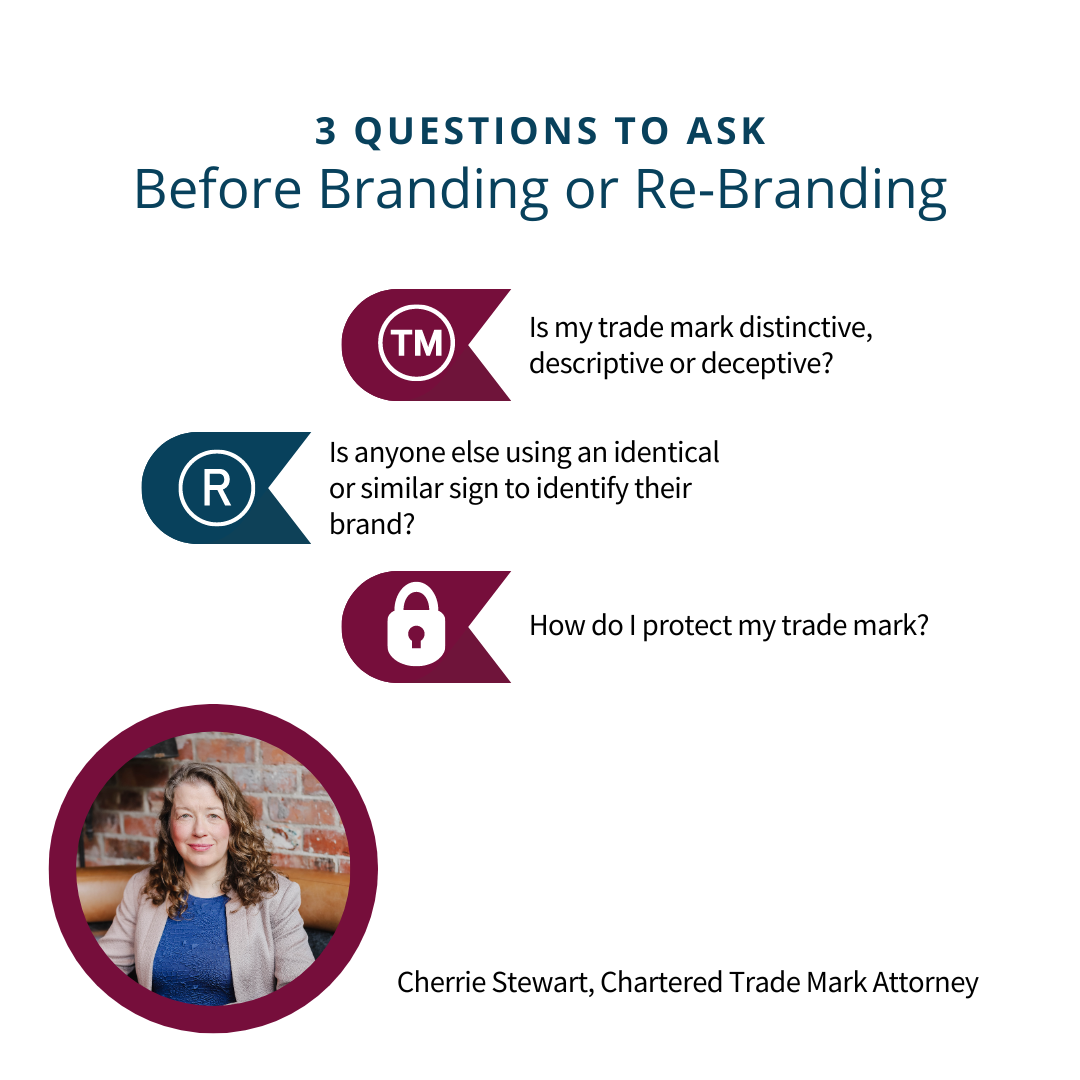If you are considering what signs should be used to identify your new product or you have decided to re-brand, you will want to ensure that your products stand out in the marketplace and one way of doing that is to adopt unique signs as indicators of your brand, i.e., a trade mark.
A trade mark is any sign which is used to distinguish your goods or services from those of your competitors. It could be a word, a logo, a colour or colour combination, a sound, or even an action (think Asda’s bottom tap).
Before adopting a new trade mark there are three questions which should be asked.
- Is my trade mark distinctive, descriptive or deceptive?
The more distinctive your trade mark the more likely it is that it will be able to identify the goods or services as coming from a single company. A trade mark is essentially a badge of origin which indicates that products sold under that sign derive from a single undertaking. If your trade mark is not distinctive it cannot do the job of identifying your product.
If your trade mark is descriptive or used, or likely to be used, in the everyday language of the field in which you operate then it is unlikely to be distinctive. It is also unlikely you would be able to prevent third parties from using an identical or similar mark to describe their products. After all, there are only so many ways in which goods and services can be described and these descriptors need to be available for everyone to use.
The most successful trade marks are those which are arbitrary, fanciful or made-up. Think of the trade mark ‘Apple’ – an everyday word but when used in the context of computers and communication technology very distinctive and unique. The trade mark KODAK on the other hand was a completely made-up name which does a great job of identifying goods which originate from its company.
- Is anyone else using an identical or similar sign to identify their brand?
If there is already someone using an identical or similar mark to identify identical or similar goods or services you may infringe upon their rights or be at risk of a passing-off action if you adopt the proposed mark.
A trade mark clearance search is therefore essential. You don’t want to launch your product in the marketplace only to receive a cease-and-desist letter forcing you to rebrand.
Loss of revenue, loss of reputation, and loss of goodwill together with the cost of new signage, advertising materials, domain names, changes to social media accounts, etc. can be an expense that a business can ill afford, and which can often contribute substantially to its failure.
A trade mark clearance search is also something to consider when expanding your range of products into a new sphere. Just because you have used a mark in respect of particular goods or services for years, and have a registration for the same, does not give you the automatic right to use that same mark in respect of different goods and services.
In 2021 Bentley Motors, despite their large reputation and many trade mark registrations in the mark BENTLEY in respect of cars, was ordered by the court to stop selling most types of clothing under the mark BENTLEY. This is because an unconnected company, namely Bentley Clothing, was the owner of earlier registered rights in the mark BENTLEY in respect of clothing. The marks hadn’t previously conflicted due to the distinct areas of use, however when BENTLEY extended their range of goods suddenly there was conflict.
- How do I protect my trade mark?
A company’s reputation is imbued within the signs which identify its goods. If its trade marks are tainted, its ability to attract consumers is also tainted. It is therefore important to protect these important brand identifiers and the way to do that is by registering them in the territories in which use is to be made. A trade mark registration gives you the tools to use to stop a third party from exploiting your hard work and damaging your reputation and sales.
In some countries, e.g., Ireland and the United Kingdom, the use of a trade mark may result in some unregistered trade mark rights however these are geographically limited to your specific area of reputation and are expensive and time-consuming to enforce. They can only be enforced against third-party use which constitutes a misrepresentation and causes damage.
Registered trade mark rights are documented making them cheaper and easier to enforce. A trade mark registration is not geographically limited to your area of reputation and protects against the use of confusingly similar marks, not just those which are identical or near identical. Additionally, a registered trade mark is a property right that can be bought, sold, or used as a lien or as security; it can generate income through licensing or sale of IP rights; and may increase the worth of a business in the eyes of investors.
While intangible, the goodwill, i.e., the attractive force which brings in custom, imbued within a trade mark can be one of a company’s most important assets and should be protected just as physical assets are.
Our trade mark attorneys are well-versed in the risks involved in adopting a trade mark and would be happy to guide you as you take this important step in deciding on those signs in which your company’s reputation and goodwill will reside.


